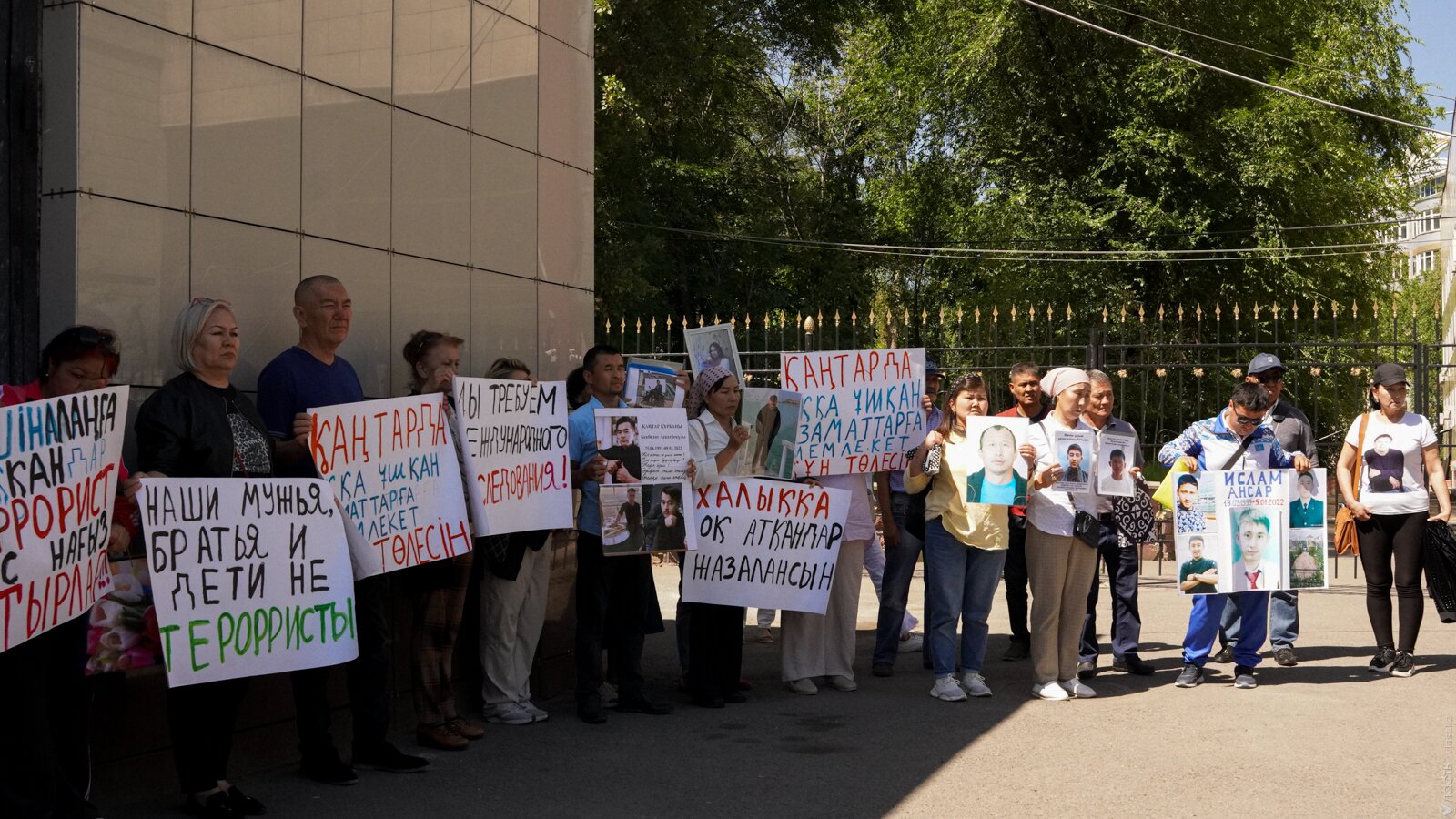A number of Kazakhstani and global human rights advocates published a report on January 31 on the violence that occurred on the sidelines of the repression of urban protests in January 2022 across Kazakhstan, commonly known as Qandy Qantar (Kazakh for “Bloody January”). The results of the months-long investigation into several instances of torture and ill-treatment against detainees paint a dark picture for Kazakhstan’s human rights record.
One of the main findings of the investigation was that the “authorities have failed to conduct impartial and effective investigations into the events, and especially in regards to the allegations of torture and ill-treatment by officials.”
The report lists, chronicles, and features several instances of torture and ill-treatment of detainees and prisoners. In a special section, it also details the role of medical workers as accomplices of police officials.
Rachel Gasowski, programme director at the Brussels-based International Partnership for Human Rights (IPHR), one of the NGOs involved in the drafting of the report, told Vlast that the failure to properly frame these incidents as crimes during court trials meant that human rights violations went unpunished.
“Most complaints on torture related to Bloody January have been dismissed by the investigating authorities after they said they failed to find ‘evidence of a crime’. This is despite the fact that many victims claimed they were able to identify their abusers.”
Some cases of ill-treatment could have resulted in the death of detainees, the report argues.
“Civil society activist Aitbai Aliev died in the city of Kyzylorda under circumstances suggesting that his death may have been caused by injuries sustained through torture.”
In the report, the NGOs highlighted how the authorities had built a wall of silence to avoid a public, transparent discussion of the instances of torture. Some of those who spoke out about their ill-treatment later faced repercussions or even prosecution.
“Sergei Shutov from Atyrau left the country after being tortured, and later learned that a case may have been being prepared against him for ‘knowingly disseminating false information’, when he spoke out about his treatment at the hands of the authorities,” the report mentioned in one of several examples of law enforcement retaliation against victims.
In an email to Vlast, Gasowski added that victims and their relatives were frightened and threatened against lodging official complaints.
“We have seen that victims fear lodging complaints of torture, and that they have simply lost faith in the criminal justice system. Some have even been pressured into withdrawing complaints.”
The finding about a number of medical workers becoming accomplices in some cases of torture was peculiar and drummed up concern. Reports by human rights organizations and journalists highlighted how doctors and nurses failed to prevent torture and to treat the victims of such treatment.
“People who were injured during the protests [were] being turned away from state hospitals and detainees [were] not being treated by doctors in police detention as specified by law,” the report specified.
“The vast majority of cases reported involve allegations of patients being mercilessly dragged out of hospitals to be sent to police and pre-trial detention centers from their state hospital beds [...] without any visible objections from doctors or other medical personnel.”
President Kassym-Jomart Tokayev said in mid-February and in early March that there should be a thorough investigation into the treatment of detainees in order to punish any abuse. On March 16, Tokayev acknowledged that “law enforcement officers used prohibited methods of interrogation, and even torture, against detainees.”
Without a proper punishment of the perpetrators, however, justice cannot be restored, argued Gasowski of IPHR.
“We are highly concerned about the pervasive and ongoing use of torture in Kazakhstan, something which has been particularly evident following the events in January last year.”
Several NGOs joined efforts to compile the report over several months. Alongside IPHR, Almaty-based Kazakhstan International Bureau for Human Rights and the Rule of Law (KIBHR), and Kazakhstan’s NGO Coalition against Torture (NGO Coalition) were the main authors of the research and reporting, in partnership with the World Organisation against Torture (OMCT).
The report, available in Russian and English, is structured into three main parts, a background section on the events, a partial chronicle of human rights violations, and an assessment of the authorities’ timid follow-up in the 12 months that followed Bloody January.
A series of 14 recommendations for Kazakhstan’s authorities make up the conclusion of the report, chiefly focusing on the proper investigation and punishment of torture and ill-treatment, fair treatment of court cases and victims, and mechanisms for prevention of future instances of such abuses.
Поддержите журналистику, которой доверяют.








